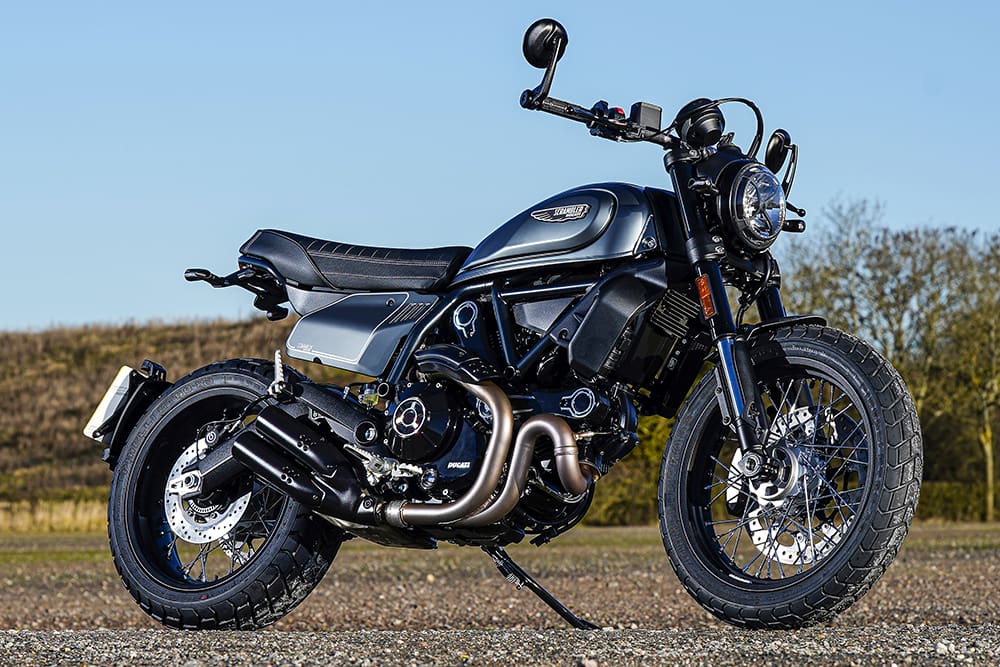Introducing the 2021 Ducati Scrambler Nightshift.
Ducati launched the original Ducati Scrambler in 1962 aimed at the American market. It was a cool looking bike, it typified the 1960s in America with its wide ’bars, centrally mounted headlight and iconic fuel tank, which swept into the wide and comfortable seat.
Like the new Mini, Fiat 500 or VW beetle, Ducati looked at its history for inspiration and, creating a new sub-brand, the Scrambler was hyped using images of hipsters and glamorous locations. It was aimed at a new generation of potential Ducati owners, those more concerned about persona and personalisation rather than performance.
Images aside, the Scrambler was an excellent entry-level bike into the Ducati fold – simple and easy to use, yet fun. Ducati updated the Scrambler for 2019, and again the launch was surrounded by clever marketing and imagery, again an excellent Scrambler shone. It wasn’t an enormous step forward over the older model, but the improvements were substantial, especially the introduction of cornering ABS.
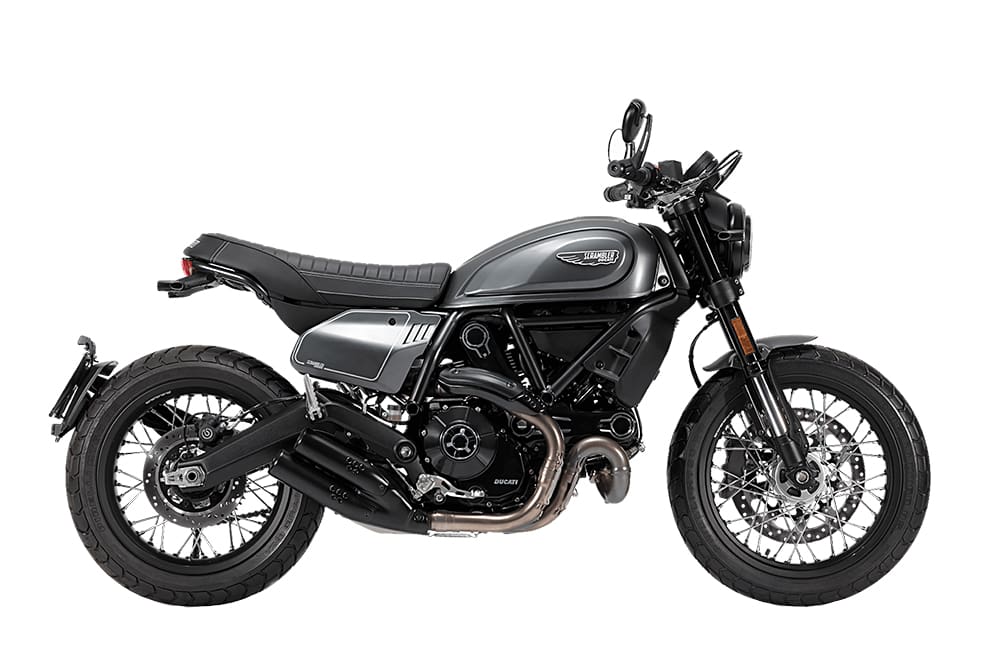
In both 803cc and 1079cc (1100) formats, the Ducati Scrambler has been a marketing and sales success for the Italians, if not a little convoluted in its range. As we move into 2021, Ducati addresses this and simplifies the line-up, removing both the Café Racer and Full Throttle variants, and introducing this bike; the Scrambler Nightshift.
Let’s start with some bad news. The only real downside or discussion point is the cost. When the first Ducati Scrambler was introduced in 2015 it was pitched at a price-competitive $13,000, or thereabouts, and represented a relatively economical way into the aspirational Ducati brand. However, today’s entry-level Scrambler has edged up in price. The base-model Icon is now $14,790, and the bike we have on test, the new Scrambler Nightshift, is $18,000 on the road. The price hike has much to do with an ever-changing global economy, and in Ducati’s defence, the Scrambler has developed significantly from that first model. But nearly $15K for an entry-level Ducati might be a little too much for some potential customers.

Now the good news. The straight and narrow handlebars, complemented by racy bar-end mirrors and retro side-mounted number boards, give the impression of a radical riding position, however it’s more relaxed than it appears. The new handlebar is not as effortless as the standard Icon’s traditional, more upright bars, but they aren’t extreme or uncomfortable, even at low speeds. I’m only 170cm and taller riders may find the bars more compromising, but they aren’t as extreme as you might think.
The only drawback to the new set-up is the bar-end mirrors, which some people love, and the steering is a little slower – not as natural. On the standard Scrambler, you’re upright, turning with wide bars. On the Scrambler Nightshift you’re further forward in the chassis, more over the fuel tank, which gives a racier feel. You feel more compelled to hang off the Scrambler mid-corner, rather than sit back and simply turn in a traditional manner. I like it, though; the riding position encourages you to tuck in, and push the lightweight chassis a little more.

With an 18-inch front wheel and a 17-inch rear, and off-road looking rubber, it shouldn’t really work, but it does. In 2019 Ducati revised the suspension, increasing the static sag on the rear to improve the ride, making it more forgiving with more movement. But, this hasn’t turned the Scrambler into a bouncing mess; it still holds its line and the basic chassis with just preload adjustment on the Kayaba rear shock works as soon as you leave the carpark.
The bike is light with a dry weight of 173kg (20kg lighter than the Desert Sled), making it flickable and almost toy-like at times. But it is just as happy on the faster stuff as it is cutting up traffic around town. Those Pirelli MT60 tyres work well in both the dry and the wet and offer great feedback. You can have real fun on the Scrambler, carrying corner speed with confidence. Even when you push on it still performs and is far more capable than it needs to be.
A single 330mm disc up front is gripped by a Brembo radial caliper – cornering Bosch ABS was introduced on the 2019 upgrade – and as the Scrambler Nightshift is so light, the single-disc stoppers are more than capable, and aren’t too abrupt. The introduction of cornering ABS was an applauded addition for new and experienced riders alike and isn’t intrusive.
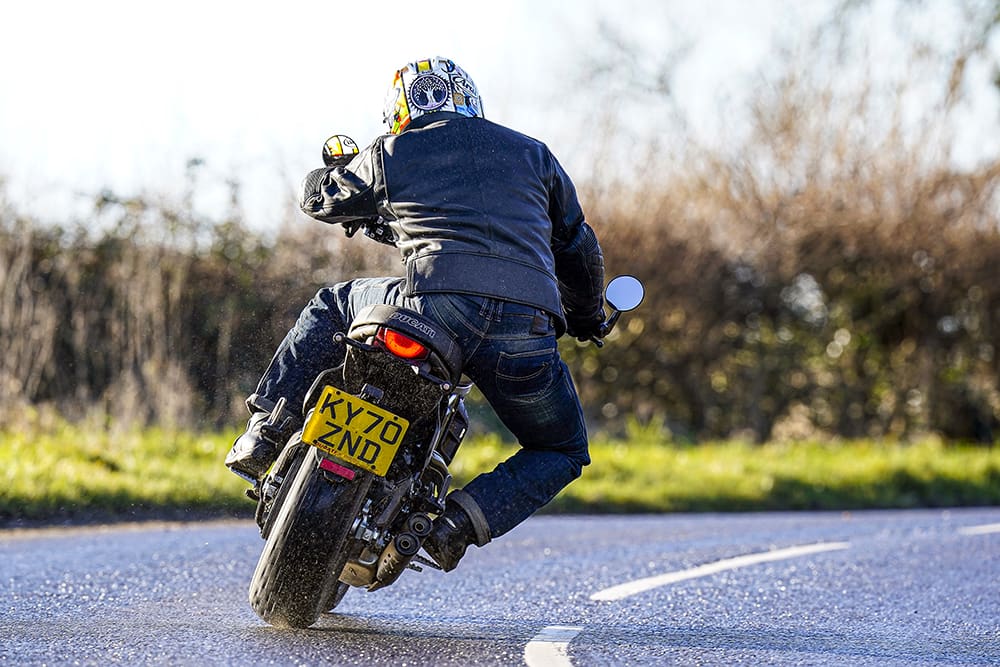
There are still no additional rider aids like traction control, though I’d argue sophisticated rider aids on a relatively slow-revving air-cooled Ducati that has excellent mechanical grip would be superfluous anyway. Tech-wise it’s relatively basic; there’s self-cancelling indicators, an LED DRL headlight, as per the previous model, and the USB port under the seat is a nice and useful touch.
The straightforward air-cooled V-twin is loosely based on the old Ducati Monster 796 (803cc) engine which produced a quoted 63.38kW. Bore and stroke are the same but valves, injectors, exhaust, intake and the airbox are all completely different. In 2019 Ducati introduced a hydraulic clutch, instead of the conventional cable, and in 2021 the motor remains unchanged.
The engine architecture is over 10 years old, and those years haven’t been kind to output which is now quoted at 53.6kw @ 8250rpm and 66.2Nm @ 5700rpm. These figures may not impress your mates down the pub, but the engine is bulletproof, eminently usable and, importantly in this market, attractive. Ducati could have gone searching for more power with a modern, water-cooled engine but it wouldn’t have had the visual charm and character of the simple air-cooled V-twin.
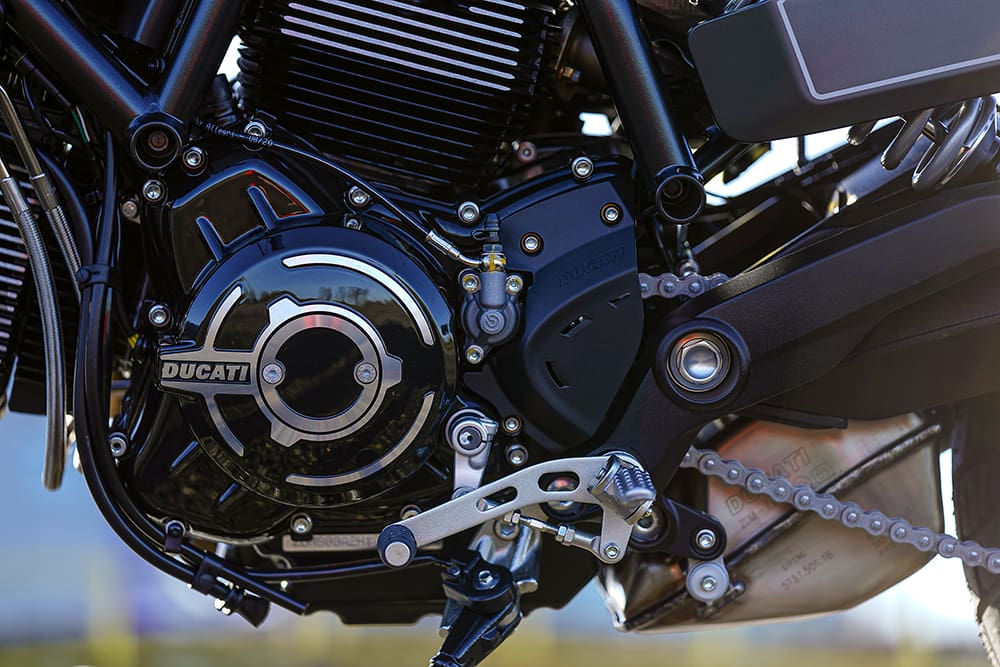
Power delivery is smooth, peak torque is at just 5700rpm so there’s no real need to rev the twin; instead short-shift and enjoy the usability of the Desmo motor. All of the power is accessible, that flat torque curve gives great drive from anywhere and, combined with typical Scrambler lightness, you soon realise this is anything but a slow bike.
I’ve ridden numerous miles on different variants of the Scrambler over the years, and I’m always pleasantly surprised by its sprightly and well-measured performance, which is more than enough for the road and is capable of cruising along the motorway without it feeling out of breath. You don’t really need much more for a relaxed and sometimes spirited ride.
If you are dropping down in capacity for a Scrambler you may miss the lack of over-rev and might long after a little more excitement towards the top end too, but the target audience of new and inexperienced riders will appreciate its accessibility. After all, almost any gear will do! And around town it’s a delight to ride and is as useful as it is attractive.
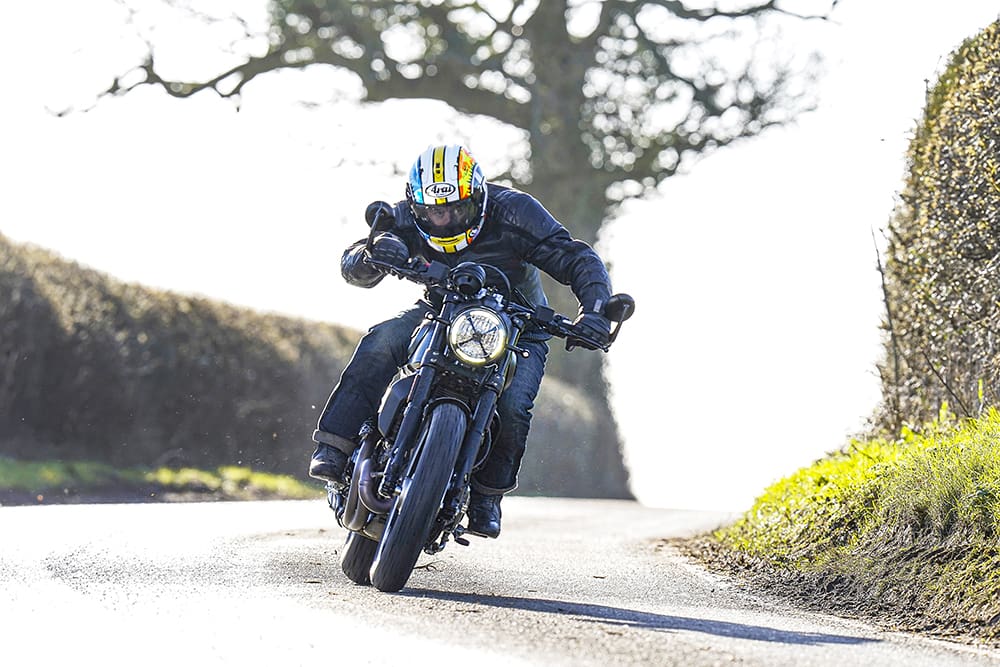
As you’d expect, economy is ample for a low revving air-cooled twin. Ducati claims 5.2L/100km, I managed a little less at 5.4L/100km, which gives you a theoretical tank range of just over 240km from the 13.5L fuel tank.
A fuel gauge was added in 2019, rather than a fuel light, and you’re going to need to start looking for fuel around 190-210km, which isn’t bad. With reasonably welcoming ergonomics and a new and comfortable flat seat, embarking on some serious miles on the Scrambler Nightshift isn’t unthinkable. I spent all day in the saddle without any comfort complaints.
The Scrambler Nightshift is a good looking motorcycle, but if it isn’t individual enough for you there is a host of accessories to personalise the bike further. One of the fun characteristics of the Scrambler range is that you can add or remove parts easily, they are relatively simple to work on and there is a hefty catalogue of different exhausts, rear ends and accessories to choose from.

And Ducati hasn’t stopped with the bikes; there is a huge range of attractive Scrambler clothing, from hats and watches to leather jackets and helmet bags. Sometimes it’s hard not to get hooked on the hipster thing – I’m hooked.
Even if you ignore the hipster image and ingenious marketing, the new Scrambler Nightshift carries forward the original bike’s qualities, namely being easy to ride, fun, lightweight, good looking and driven by a charismatic engine with enough performance on the road.
The fact that it looks like a one-off special and not a standard production bike can only add to its charm. My only unease is the price. We are now close to $15,000 for an entry-level Ducati. Yes, I know this is a premium brand, and the bike looks spectacular, but I think the increase in price from the original in 2015 might be a little too much for first-time buyers – only time will tell.
